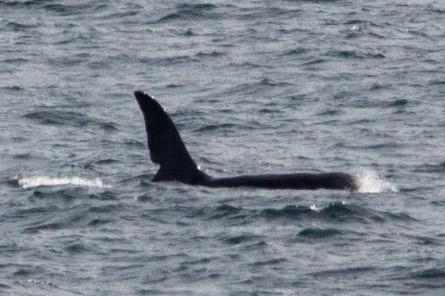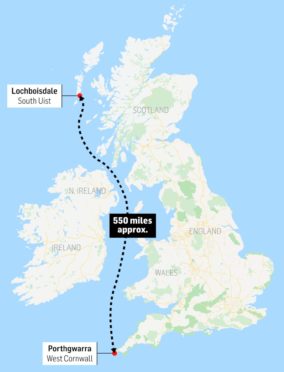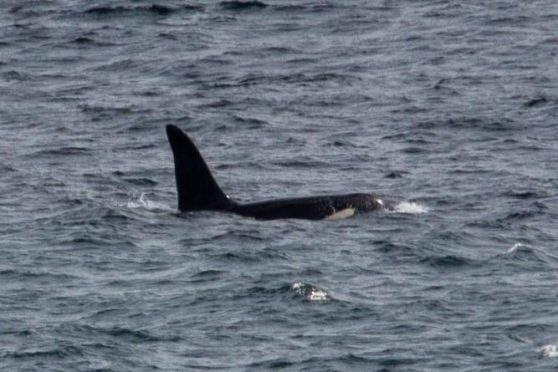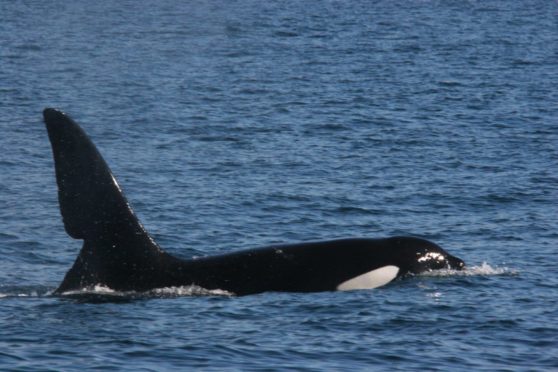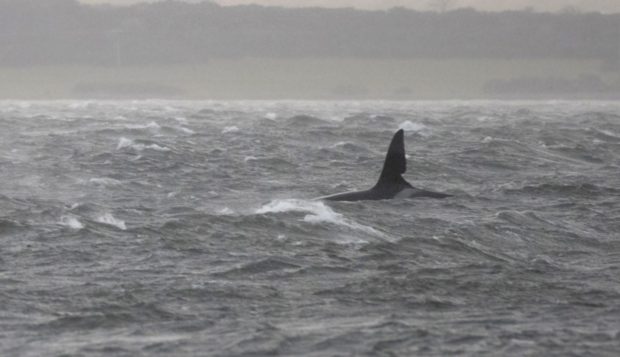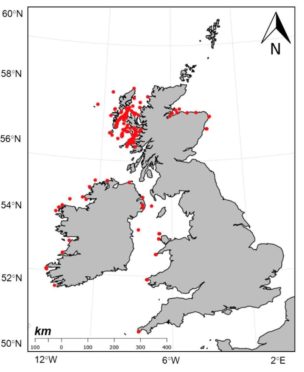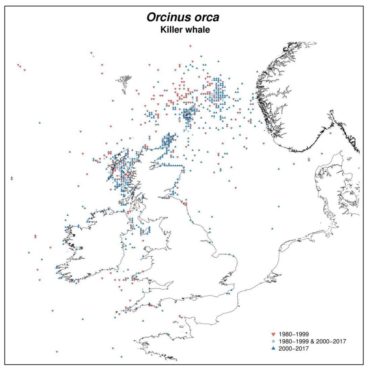Two of Scotland’s most famous killer whales, John Coe and Aquarius, have been spotted back in the Hebrides after paying a visit to Cornwall.
The mammals are from the famed West Coast Community of killer whales and their trip to Porthgwarra in West Cornwall is the furthest south they have ever been recorded.
They were spotted on Wednesday, May 5 by Will McEnery-Carthwright from the Minack Theatre in Porthcurno, West Cornwall.
He called it a “once in a lifetime event.”
Then, nine days later on May 14, they were seen back in the Hebrides by Anthony Rigell from Waternish Point in the Isle of Skye.
And finally, three days later they were spotted off Lochboisdale, South Uist from the Hebridean Whale and Dolphin Trust’s (HWDT) research vessel, Silurian.
They had travelled about 55o miles back up the UK coast.
Five decades of tracking
However, this has dwindled to just those two, with fears that they might die out in our lifetime.
The sighting of the pair near Cornwall is the first time they have been seen off England and is the most southerly point they have ever been recorded.
Mr McEnery-Cartwright shared the encounter with the Sea Watch Foundation, HWDT and the Irish Whale and Dolphin Group, who work together to track the killer whales.
He said: “This is a once-in-a-lifetime event. I am so happy and proud to be part of this historical moment.
“To see these fantastic creatures is one thing, but to photograph them is just breathtaking.”
John Coe and Aquarius
John Coe is one of the most distinctive killer whales seen around the British Isles with a deep nick near the base of his dorsal fin and fluke.
During the 1980s, he was spotted in groups of up to 20 individuals, but this number has dwindled over the years.
Since 2016, John Coe and Aquarius have not been seen with any other killer whales and no calves have been recorded in recent years, leading to fears the group may die out in our lifetime.
Peter Evans, director of Sea Watch Foundation, has been tracking sightings of killer whales around the British Isles since the 1970s.
He added: “Many people ask how John Coe got his name’.
“It is the name of a character in a book called ‘’Mile Zero’’ by Thomas Sanchez about a freed slave who became a student of the sea.
“It seemed a fitting name for this great wanderer of the ocean who must know the waters around Britain and Ireland better than most.’’
Previous sightings
Most sightings of the animals have been recorded in the Hebrides, hence them being called a West Coast Community, and otherwise along the west coasts of Scotland and Wales.
John Coe has been spotted off the north-east coast of Scotland.
The previously confirmed sighting of the pair was reported off Skye in the Inner Hebrides in October 2020, while in Ireland, John Coe was last seen off the coast of Co. Donegal in August 2020.
Lauren Hartny-Mill, science and conservation manager at the HWDT, added: “We are all absolutely thrilled that John Coe and Aquarius have been seen again.
“Will’s recent sighting off Cornwall really highlights how crucial public sightings data are in helping us monitor the movements of individual animal’s year after year.
“It shows how much we still have to learn about their movements, and it is fascinating to be able to add another important piece to the puzzle.
“Most of what we know about animals like John Coe and Aquarius is thanks to dedicated members of the public who send in their sightings and photographs of whales and dolphins to citizen science sightings schemes run by regional charities like Whale Track by Hebridean Whale and Dolphin Trust.”
How can you track it?
You can report your sightings of killer whales and marine animals on the west coast of Scotland to the HWDT.
More on killer whales
‘It was like time stood still’: NHS nurse’s five-year search for orca ends on most emotional of days
